eBook 2: Chapter 8
Program Management Phase for Business Continuity Management Planning Methodology for the Singapore Institute of Technology (SIT)
Introduction
![[C8] Program Management](https://no-cache.hubspot.com/cta/default/3893111/625627a6-2a06-46dd-ab95-e84e8c2ed22e.png)
The Program Management Phase marks the foundational stage of the Business Continuity Management (BCM) Planning Methodology for the Singapore Institute of Technology (SIT).
As a leading applied learning university in Singapore, SIT’s mission is to nurture future-ready graduates through an integrated work-study model and strong industry partnerships.
Ensuring the resilience of its academic, administrative, and operational functions is essential to maintaining this mission, especially in the face of disruptions such as IT outages, pandemics, or infrastructure failures.
Program management in the BCM context involves establishing the framework, governance, and resources required to sustain a systematic and effective continuity management system.
It ensures that the BCM initiative aligns with SIT’s institutional objectives, regulatory requirements, and operational priorities — all while fostering a culture of resilience across its academic and professional communities.
At SIT, this phase provides the foundation upon which subsequent BCM phases—Risk Analysis and Review (RAR), Business Impact Analysis (BIA), Business Continuity Strategy (BCS), Plan Development (PD), Testing & Exercising, and Maintenance & Review—are built.
Key Components of the Program Management Phase
1. Establishing BCM Governance Structure
A robust governance structure is crucial for embedding BCM into SIT’s management framework.
- BCM Steering Committee: Chaired by a senior leader (e.g., Vice President for Corporate Services or Chief Risk Officer), this committee provides oversight, sets direction, and endorses key BCM decisions.
- BCM Coordinator or Office: Typically housed under the Office of Safety, Health, and Resilience, this function coordinates BCM implementation across faculties and departments, ensuring consistency and compliance with ISO 22301 standards.
- Departmental BCM Representatives: Each faculty or service division (such as Academic Administration, Digital Learning, IT Services, Campus Operations, and Student Life) appoints a BCM representative responsible for local BCM activities, data collection, and plan maintenance.
This governance structure ensures that BCM responsibilities are clear, accountability is maintained, and decision-making is both timely and effective during disruptions.
2. Defining BCM Policy and Objectives
The BCM Policy articulates SIT’s commitment to business continuity, outlining the scope, principles, and expectations for all stakeholders.
Key policy elements include:
- Ensuring continuity of critical academic and operational services (e.g., online learning, student administration, IT infrastructure).
- Compliance with regulatory and accreditation requirements for higher education institutions in Singapore.
- Integration of BCM into SIT’s enterprise risk management (ERM) and strategic planning processes.
- Continuous improvement through regular testing, review, and staff awareness programs.
The BCM objectives for SIT include:
- Protecting student learning and academic integrity during disruptions.
- Maintaining staff and student safety on campus.
- Ensuring timely recovery of critical IT systems supporting teaching, learning, and research.
- Strengthening coordination between SIT, partner universities, and key stakeholders.
3. Establishing the BCM Framework and Scope
The scope of SIT’s BCM program defines the organisational boundaries and operational units included. This includes:
- Academic Functions: Teaching, examinations, and academic programme delivery across campuses.
- Digital and IT Services: Learning management systems, student portals, and online collaboration platforms.
- Administrative Services: Admissions, finance, and human resources.
- Campus Operations: Facilities management, safety, and security.
- Partnership Management: Coordination with industry partners and overseas universities in joint programmes.
Defining this scope ensures that resources are focused on critical business functions (CBFs) and dependencies essential to SIT’s continued operations.
4. Securing Management Commitment and Resources
The success of BCM at SIT depends on strong top management commitment.
Senior leadership must ensure that sufficient resources, funding, and time are allocated to develop, test, and sustain continuity plans.
- SIT’s leadership demonstrates commitment by integrating BCM into institutional performance objectives and strategic resilience planning.
- Budget allocation covers BCM training, IT recovery solutions, awareness campaigns, and simulation exercises.
- Staff are given time and recognition for participating in BCM-related roles, fostering a sense of ownership and accountability.
5. Developing the BCM Implementation Roadmap
The Program Management Phase concludes with the formulation of a BCM Implementation Roadmap. This roadmap provides a clear timeline, milestones, and deliverables for the BCM journey.
For SIT, the roadmap typically includes:
- Establishment of the BCM Steering Committee and Policy endorsement.
- Identification of critical business functions through the Business Impact Analysis (BIA).
- Development of business continuity strategies and plans.
- Execution of awareness sessions and simulation exercises.
- Review and improvement cycles are aligned with SIT’s academic calendar and risk review periods.
The roadmap serves as a living document, updated annually to reflect new academic programmes, digital initiatives, and emerging threats.
Integration with Enterprise Risk Management (ERM)
SIT’s BCM program complements its Enterprise Risk Management framework by addressing the continuity dimension of operational and strategic risks.
While ERM focuses on identifying and assessing risks, BCM ensures that mitigation strategies and recovery capabilities are in place when risks materialise.
This integration ensures that resilience is embedded within SIT’s institutional governance and decision-making processes.
The Program Management Phase is the cornerstone of SIT’s Business Continuity Management journey. It defines the structure, policy, scope, and governance necessary to guide the institution through subsequent phases of BCM implementation.
By establishing a formal BCM governance structure, defining clear objectives, and aligning BCM with institutional goals, SIT reinforces its commitment to safeguarding learning continuity.
Through strong leadership, integrated planning, and a proactive resilience culture, the Singapore Institute of Technology ensures that its academic mission and community remain steadfast—regardless of the challenges that arise.
Ultimately, this phase transforms BCM from a compliance exercise into a strategic enabler of operational resilience, ensuring that SIT continues to deliver excellence in applied learning even in times of disruption.




![BCM E2 PM [Program Management] Banner](https://blog.bcm-institute.org/hs-fs/hubfs/BCM%20E2%20Blog%20Banner/BCM%20E2%20PM%20%5BProgram%20Management%5D%20Banner.png?width=750&height=150&name=BCM%20E2%20PM%20%5BProgram%20Management%5D%20Banner.png)

![[C1] Business Continuity Management Planning Methodology](https://no-cache.hubspot.com/cta/default/3893111/bc2f0e17-2827-4ce0-9a06-7c05434314fc.png)
![[C2] Project Management](https://no-cache.hubspot.com/cta/default/3893111/3a311fa3-a1b1-47e6-b10d-af447cd88e02.png)
![[C3] Risk Analysis and Review](https://no-cache.hubspot.com/cta/default/3893111/b9faa4ef-9c43-4215-a838-b89bf6160dca.png)
![[C4] Business Impact Analysis](https://no-cache.hubspot.com/cta/default/3893111/8bc06236-91b5-4298-b94f-a3edd5816628.png)
![[C5] Business Continuity Strategy](https://no-cache.hubspot.com/cta/default/3893111/ff7d5c03-a93b-4131-b673-f997d6592d89.png)
![[C6] BCM Plan Development](https://no-cache.hubspot.com/cta/default/3893111/052950a1-b690-4303-87b6-7848f69f2513.png)
![[C7] Testing and Exercising](https://no-cache.hubspot.com/cta/default/3893111/e4fcdf0f-e927-488f-baa8-4564c74bda78.png)
![[C9] Summary](https://no-cache.hubspot.com/cta/default/3893111/9e5f7b73-8827-42b4-b5b2-769d4170c7e4.png)
![[C10] Back Cover for BCM](https://no-cache.hubspot.com/cta/default/3893111/f23b8be6-b8e3-46cf-816c-2f5de1541220.png)


![Register [BL-B-3]*](https://no-cache.hubspot.com/cta/default/3893111/ac6cf073-4cdd-4541-91ed-889f731d5076.png)



![FAQ [BL-B-3]](https://no-cache.hubspot.com/cta/default/3893111/b3824ba1-7aa1-4eb6-bef8-94f57121c5ae.png)
![Email to Sales Team [BCM Institute]](https://no-cache.hubspot.com/cta/default/3893111/3c53daeb-2836-4843-b0e0-645baee2ab9e.png)





